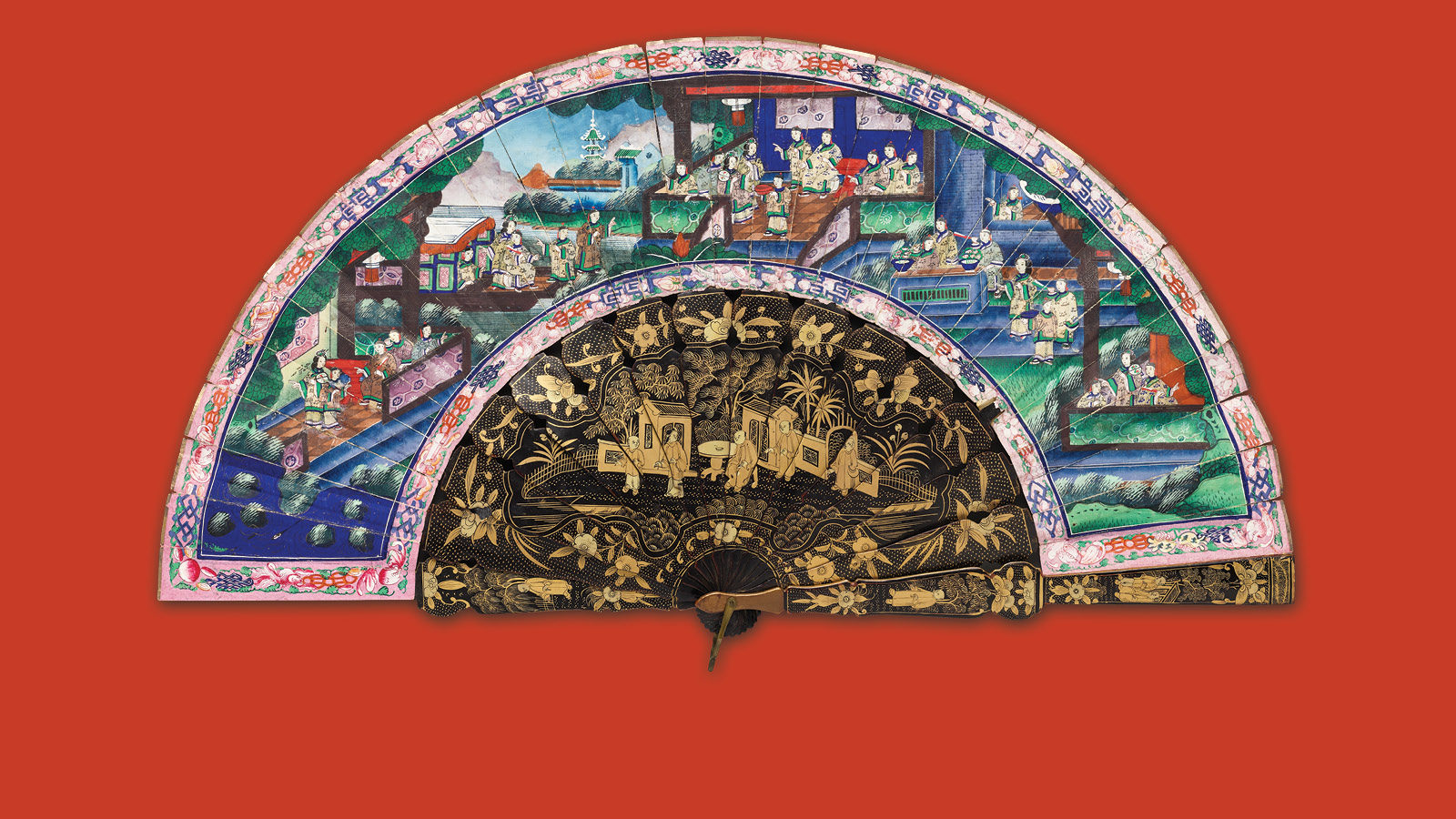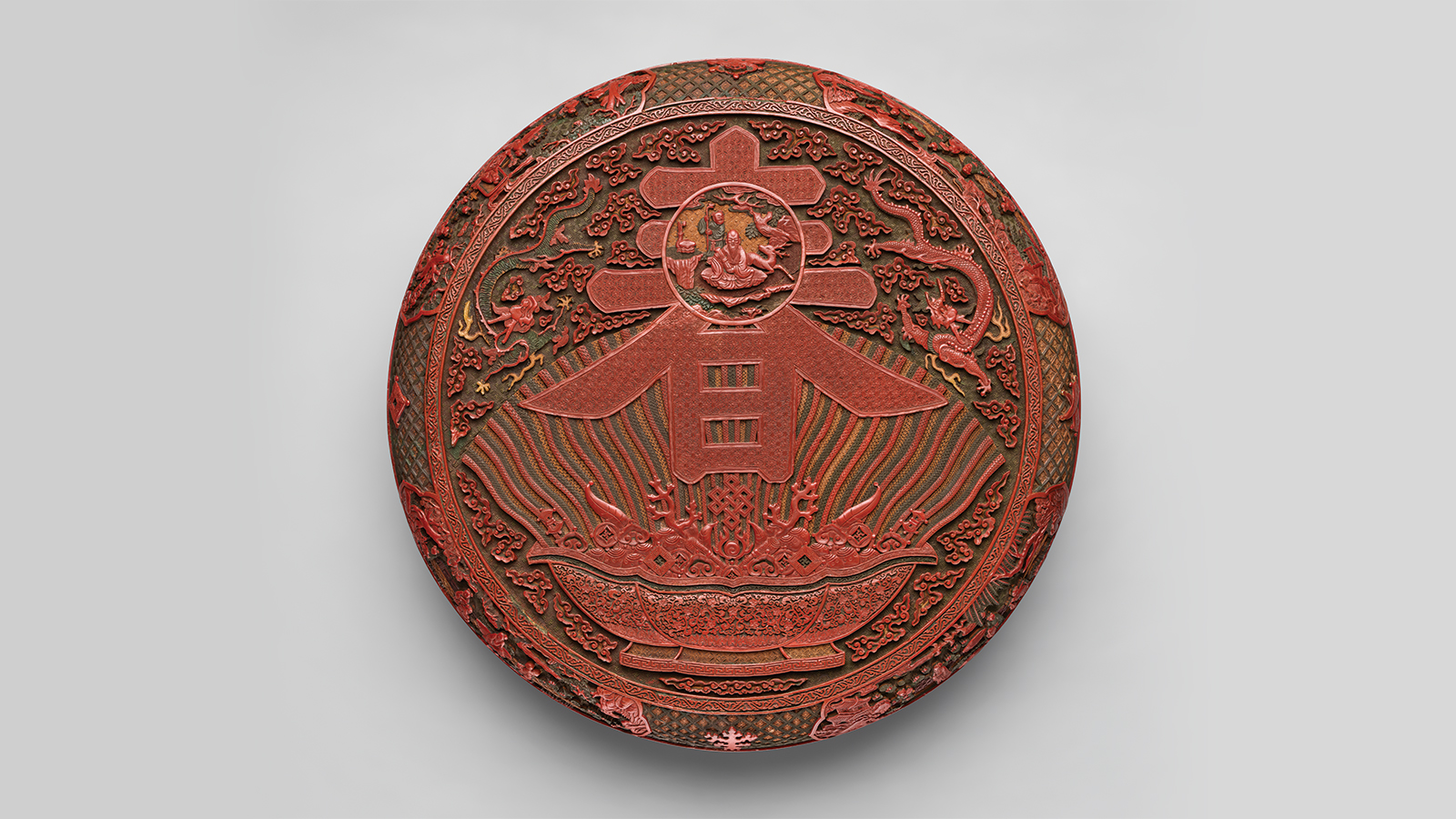Circular box decorated with the character for spring and a bowl of treasures
Lacquer is created from the sap of a tree native to southern China and was originally applied as a protective finish for wood. Later, artisans used lacquer to form ornamental surfaces, with thick layers that could be carved into relief patterns or inlaid with decorative elements. High-quality lacquerware is precious because of the skill, time, and expense it requires to produce.
Over centuries, a range of lacquer techniques developed along three distinct paths: surface painting or drawing, carving, and inlay. In early China, lacquer was decorated with painted images or patterns. Charcoal and cinnabar were used to color the lacquer black or red, respectively. By the eighth century, craftsmen mastered techniques of attaching appliques of metal leaf and inlaying gilded silver wires and mother-of-pearl. In subsequent eras, tastes favored engraved layers of alternating lacquer colors and complex patterns in relief carving to produce dazzling surfaces. Popular motifs included imperial and auspicious symbols associated with good luck, longevity, and prosperity.
With their unique beauty and extravagant cost, traditional lacquerwares were considered luxury objects, serving as diplomatic gifts, exported goods, and dynastic treasures. From a Western Han period (206 BCE–9 CE) cosmetic box set to Qing- and Republic-era luxury objects and household items of grandiose display, Delightful Luxury fascinates the eye and pleases the mind, while inviting the viewer to look closely and marvel at the artists’ finely honed techniques.
Exhibition highlights include a Southern Song period (1127–1279) cosmetic box with surface engravings of dragons playing amid clouds symbolizing the imperial clan and prosperity, while a lotus-shaped box with tray and cover from the Yuan (1271–1368) recalls the organic forms of earlier ceramics and metalware. A rectangular tray with landscape design from the Ming dynasty (1368–1644) is a virtuoso example of mother-of-pearl inlay, whose literati-style landscape evokes ancient painting masters and literati culture. From the era of the Qianlong emperor (1736–1795), prolific collector and patron of the arts, is a table screen and stand of carved multicolor lacquer on wood. Layered color patterns form auspicious religious symbols, while the screen’s inherent symbolic wordplay enhanced its appeal for display in a wealthy Qing household, and now our museum.
Delightful Luxury: The Art of Chinese Lacquer is on view through Sep. 18, 2023.


